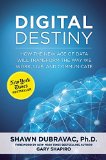February 1, 2015

Seeing Things as They Are: A Theory of Perception by John R. Searle (Oxford University Press, 2015)
(kindle ed.), (amazon.co.uk), (UK kindle ed.)
Book description from the publisher:
This book provides a comprehensive account of the intentionality of perceptual experience. With special emphasis on vision Searle explains how the raw phenomenology of perception sets the content and the conditions of satisfaction of experience. The central question concerns the relation between the subjective conscious perceptual field and the objective perceptual field. Everything in the objective field is either perceived or can be perceived. Nothing in the subjective field is perceived nor can be perceived precisely because the events in the subjective field consist of the perceivings , whether veridical or not, of the events in the objective field.
Searle begins by criticizing the classical theories of perception and identifies a single fallacy, what he calls the Bad Argument, as the source of nearly all of the confusions in the history of the philosophy of perception. He next justifies the claim that perceptual experiences have presentational intentionality and shows how this justifies the direct realism of his account. In the central theoretical chapters, he shows how it is possible that the raw phenomenology must necessarily determine certain form of intentionality. Searle introduces, in detail, the distinction between different levels of perception from the basic level to the higher levels and shows the internal relation between the features of the experience and the states of affairs presented by the experience. The account applies not just to language possessing human beings but to infants and conscious animals. He also discusses how the account relates to certain traditional puzzles about spectrum inversion, color and size constancy and the brain-in-the-vat thought experiments. In the final chapters he explains and refutes Disjunctivist theories of perception, explains the role of unconscious perception, and concludes by discussing traditional problems of perception such as skepticism.
Google Books preview:
Comments (0)
- new books,philosophy of mind

Digital Destiny: How the New Age of Data Will Transform the Way We Work, Live, and Communicate by Shawn DuBravac (Regnery Publishing, 2015)
(kindle ed.), (amazon.co.uk), (UK kindle ed.)
Book description from the publisher:
A New York Times Bestseller!
Our world is about to change.
In Digital Destiny: How the New Age of Data Will Change the Way We Live, Work, and Communicate, Shawn DuBravac, chief economist and senior director of research at the Consumer Electronics Association (CEA), argues that the groundswell of digital ownership unfolding in our lives signals the beginning of a new era for humanity. Beyond just hardware acquisition, the next decade will be defined by an all-digital lifestyle and the “Internet of Everything”—where everything, from the dishwasher to the wristwatch, is not only online, but acquiring, analyzing, and utilizing the data that surrounds us. But what does this mean in practice?
It means that some of mankind’s most pressing problems, such as hunger, disease, and security, will finally have a solution. It means that the rise of driverless cars could save thousands of American lives each year, and perhaps hundreds of thousands more around the planet. It means a departure from millennia-old practices, such as the need for urban centers. It means that massive inefficiencies, such as the supply chains in Africa allowing food to rot before it can be fed to the hungry, can be overcome. It means that individuals will have more freedom in action, work, health, and pursuits than ever before.
Google Books preview:
See also: Author’s website
Comments (0)
- culture,new books
January 27, 2015

The Brain’s Way of Healing: Remarkable Discoveries and Recoveries from the Frontiers of Neuroplasticity by Norman Doidge (Viking, 2015)
(kindle ed.), (amazon.co.uk), (UK kindle ed.)
Book description from the publisher:
The New York Times bestselling author of The Brain That Changes Itself presents astounding advances in the treatment of brain injury and illness
In The Brain That Changes Itself, Norman Doidge described the most important breakthrough in our understanding of the brain in four hundred years: the discovery that the brain can change its own structure and function in response to mental experience—what we call neuroplasticity.
His revolutionary new book shows, for the first time, how the amazing process of neuroplastic healing really works. It describes natural, non-invasive avenues into the brain provided by the forms of energy around us—light, sound, vibration, movement—which pass through our senses and our bodies to awaken the brain’s own healing capacities without producing unpleasant side effects. Doidge explores cases where patients alleviated years of chronic pain or recovered from debilitating strokes or accidents; children on the autistic spectrum or with learning disorders normalizing; symptoms of multiple sclerosis, Parkinson’s disease, and cerebral palsy radically improved, and other near-miracle recoveries. And we learn how to vastly reduce the risk of dementia with simple approaches anyone can use.
For centuries it was believed that the brain’s complexity prevented recovery from damage or disease. The Brain’s Way of Healing shows that this very sophistication is the source of a unique kind of healing. As he did so lucidly in The Brain That Changes Itself, Doidge uses stories to present cutting-edge science with practical real-world applications, and principles that everyone can apply to improve their brain’s performance and health.
Google Books preview:
See also: Author’s website
Comments (0)
- cognitive science,new books





